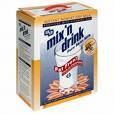
The U.S. Dept. of Agriculture is concerned about the rising cost of food and how we’re going to be able to continue healthy eating in these dicey economic times. Well, they can join the crowd! Anyway, they’ve compiled this list of “best buys” dollar-for-nutrition-wise and we thought you’d find it interesting, and perhaps a validation of what you already knew:
 GROUP BUYING
GROUP BUYING
FIRST: Consider joining a food co-op or start your own. Quantity-purchasing, then divvying up the goods can save
a lot of money. Patty and Alice are planning this even as you read.
 BULK FOODS
BULK FOODS
THEN: Buy bulk foods when they are available. They can be lower in price than similar foods sold in packages. Also, you can buy just the amount you need.
 BREADS AND GRAINS
BREADS AND GRAINS
Look for bargains on day-old bread and bakery products. Buy regular rice, oatmeal, and grits instead of the instant and flavored types.
Try whole-grain bread and brown rice to add nutrients and variety to family meals.
 VEGETABLES AND SALADS
VEGETABLES AND SALADS
Look for large bags of frozen vegetables. They may be bargains and you can cook just the amount you need, close the bag tightly, and put the rest back in the freezer.
Foods at salad bars can be costly. Some food items— lettuce, cabbage, onions, and carrots— usually cost less in the produce section of the store than at the salad bar. But if you need only a small amount of a vegetable, buying at the salad bar can save money if it reduces the amount you waste.
 FRUITS
FRUITS
Buy fresh fruits in season, when they generally cost less. Also, look for red-banded produce—while it’s “on it’s way out,” it’s perfectly fine if used immediately.
 MILK
MILK
Nonfat dry milk is the least expensive way to buy milk. When using it as a beverage, mix it several hours ahead and refrigerate so it can get cold before drinking.
Buy fresh milk in
large containers ( gallon or 1/ 2 gallon). These generally cost less than quarts.
Buy fat- free or lowfat milk to cut the amount of fat n your family’s meals. Note that children under 2 years of age should be
given only whole milk.
 MEAT AND POULTRY
MEAT AND POULTRY
Look for specials at the meat counter. Buying cuts of meat on sale can mean big savings for you.
Buy chuck or bottom round roast instead of sirloin. These cuts have less fat and cost less. They need to be covered during cooking and cooked longer to make the meat tender.
Buy whole chickens and cut them into serving size pieces yourself.
 DRY BEANS AND PEAS
DRY BEANS AND PEAS
Use these sometimes instead of meat, poultry, or fish. They cost MUCH less and provide many of the same nutrients. They are also lower in fat. AND they are such a healthy choice!
(If YOU have a smart idea, won't you share it? Life is so much easier and we accomplish so much more when we pool our resources. And after all, we're all in this together. So email
patty@dvo.com or
alice@dvo.com with YOUR Smart Ideas!)
Contribute to the Cook'n Club!
DVO would love to publish your article, prose, photography and art as well as your cooking, kitchen and nutrition tips, tricks and secrets. Visit the Newsletter Submission / Win Win for All section in our Forum for more information and details.



